#MakewithEuropeana: Art Nouveau architecture and interiors
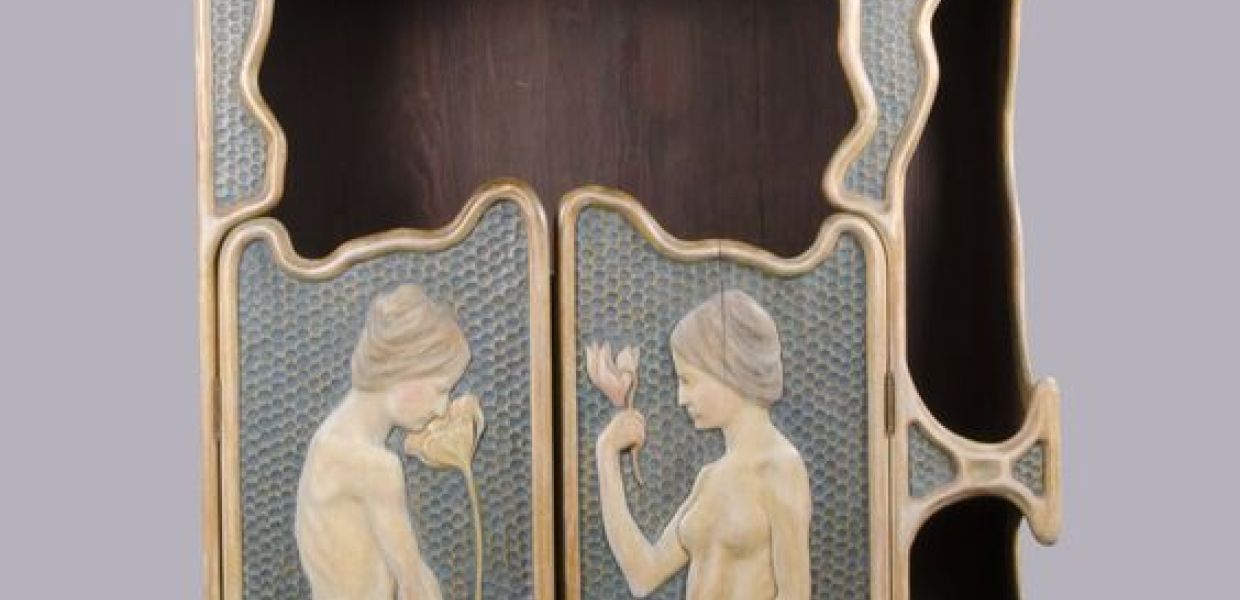
This is the third in a series of blogs dedicated to Art Nouveau and highlighting Europeana content that can inspire commercial creative reuse by makers.
Of all the influences and concepts that guided creatives during the Art Nouveau movement, one ideal prevailed: the principle of a Gesamtkunstwerk or a ‘total work of art’. Functionality allied to beauty. The union of fine and applied arts to create a powerful and fascinating environment.
During the Art Nouveau era, private and public spaces were enhanced by luxury. Decorative richness was the rule. A result of rapid industrialisation during the 19th century, new materials and technologies allowed for a sense of modernity and also for the development of an aesthetic unique to that time. This approach to interior design and architecture - one that strived to generate a captivating experience for everyone experiencing it - represents a distinct take on creativity and serves as inspiration for makers who want to use cultural heritage to engage their audiences.
Opulent facades were a key architectural element of embellished Art Nouveau buildings. The city of Aveiro, in Portugal, has some of the finest examples of striking façades. For instance, the building of the former Cooperativa Agrícola displayed below, combines hand-painted tiles and masonry sets representing lilies. The tiles were hand-painted by a local artist and produced in the popular Fonte Nova Factory in 1913. Take a stroll around Aveiro through our dedicated blog post and Pinterest board.
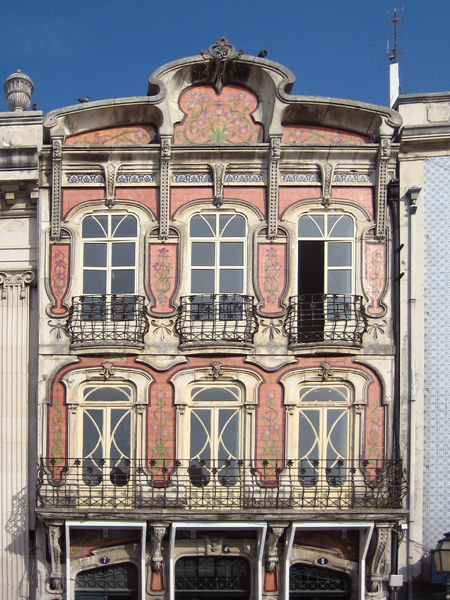
Façade of the Former Cooperativa Agrícola, 1913. Aveiro City Museum, CC BY
The organic contours of Art Nouveau on the outside of buildings were matched by equally compelling interiors. Designers had freedom to add detail to furnishings, right down to the last door handle, chair or teaspoon. Take a look at our pinterest board dedicated to Art Nouveau furniture and be amazed by beautiful pieces, like the magnificent cabinet below, which exemplifies a common Art Nouveau representation: women in idealised, feminine and seductive forms.

Skap, Valentin Kielland, 1900. Digitalt Museum. Public Domain
On Europeana Labs, we have featured a collection of house interiors and facades drawings that served for architectural studies in the early 20th century. The drawing below showcases a sophisticated living room that embodies the glamorous feel in vogue at the time.
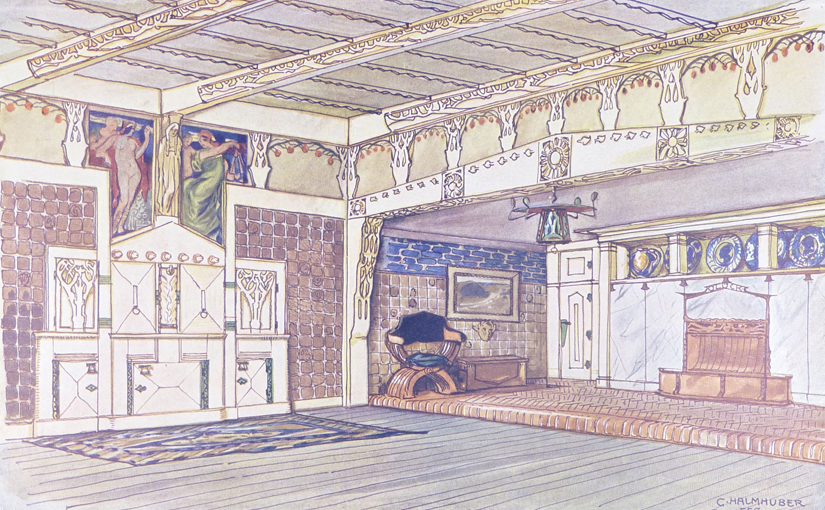
Inv. Professor G. Halmhuber, Stuttgart. Julius Hoffmann Verlag, 1903. Schola Graphidis Art Collection, Hungarian University Of Fine Arts - High School Of Visual Arts, Budapest. CC BY-SA
Architect and designer Charles Rennie Mackintosh (1868-1928) was a crucial representative of the Glasgow School, the Scottish version of Art Nouveau. One of the most iconic of Mackintosh's designs, the interior of the House of an Art Lover in Glasgow, shows the rose as a frequent motif occurring in wallpapers, stained glass windows or other furniture details. The Music Room, presented below, was intended to be used and experienced as a unified work of art.
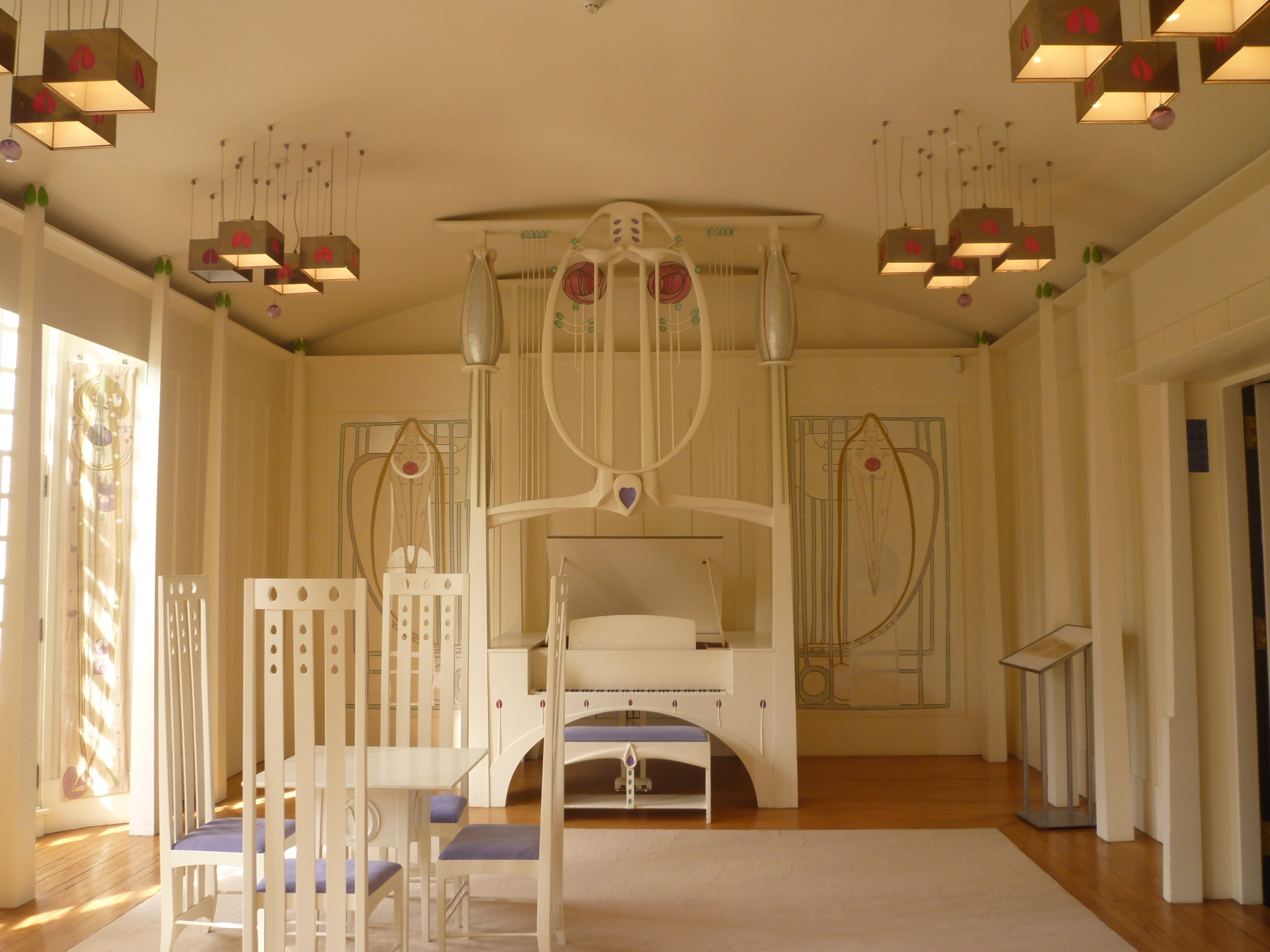
Music Room in the House of an Art Lover, Glasgow, 1901, Charles Rennie Mackintosh, Culture Grid, CC BY
Another Art Nouveau practitioner, Belgian architect and designer Victor Horta (1861-1947) had his creations defined by light, open-plan spaces, glass ceilings and the innovative use of ironwork. Horta used curved ironwork, inspired by natural forms, in the interiors and exteriors of his buildings. The image below portrays Horta’s beautiful iron chandelier design for the famous Belgian Hotel Solvay. Horta designed every element of this building, from the door handles and furnishings to the stained glass windows.
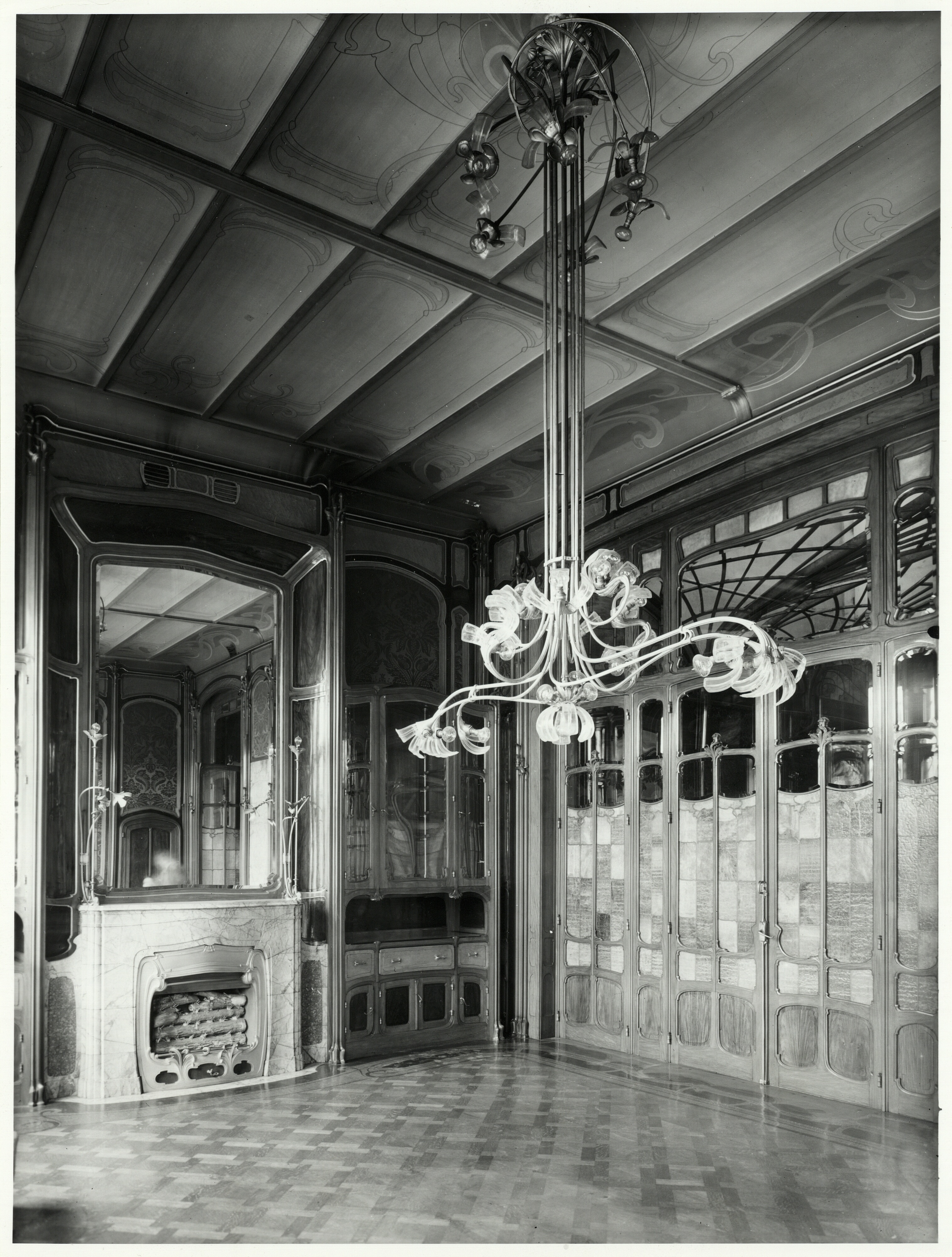
Hotel Solvay project, 1875-1930. V. Horta. Ghent University Library. CC BY-SA
If you would like to discover more about this art movement, you can also explore 3D models of Art Nouveau decorative objects on Europeana Labs.
Show us what you #MakeWithEuropeana
We will feature the best examples of makers using Europeana’s Art Nouveau content on Europeana Labs. Share your creation with us! Email us or tweet to us using @EuropeanaLabs and the hashtags #MakeWithEuropeana and #EuropeanaInspires. Stay up to date with future opportunities by signing up to the Europeana Labs newsletter.
